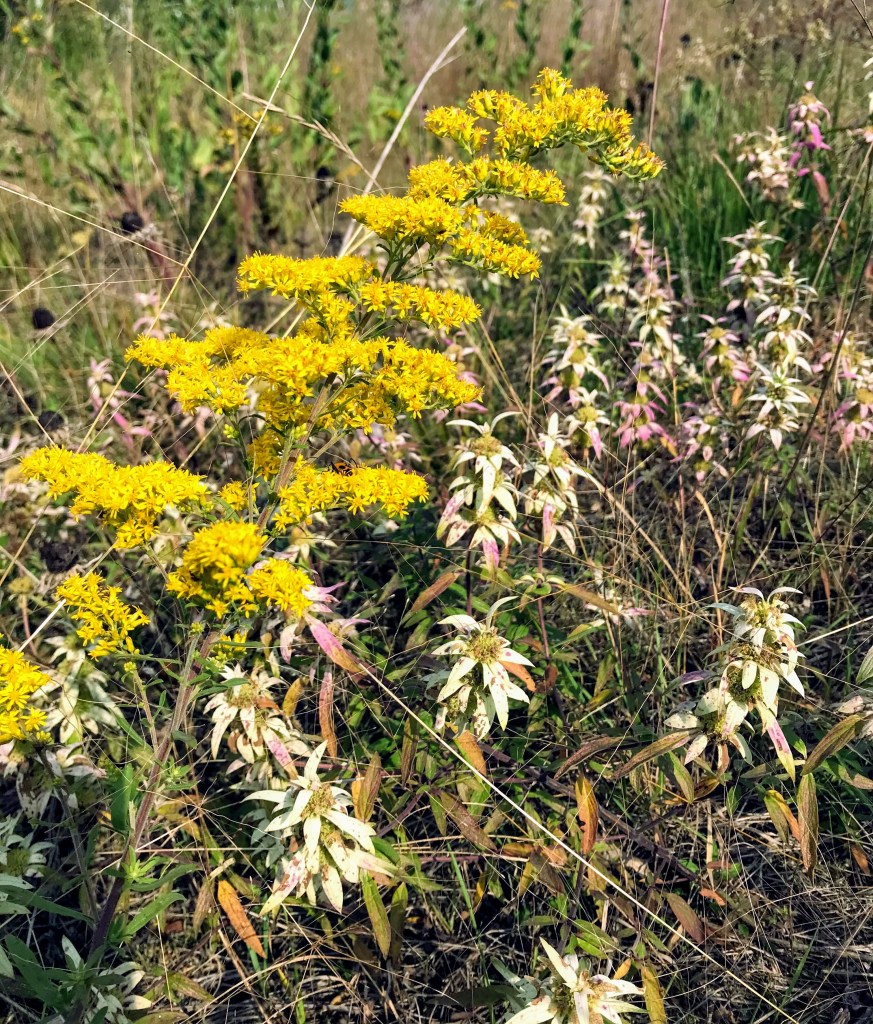The Verdict on Goldenrod: Not Guilty

(Note: I apologize for the delay in getting this 2-week old post up on your screen. I was battling computer issues that included something nasty called malware. But the subject here is still of use.)
I used to know a man who every September mowed down nearly an acre of lovely goldenrod. He was convinced that he was halting the march of allergies. I gently mentioned to him that goldenrod pollen is too large to be easily blown in the wind and that the plant depends on insects for pollination. I told him that it was the unseen pollen from ragweed that was causing his wife’s hay fever. Approximately 23 million Americans will experience the late summer symptoms of an allergy to ragweed pollen. Not only will life be made more sneezy and wheezy but the allergy can trigger asthma.
The acre of goldenrod that he cut down represented an amazing supply of nectar for beneficial insects. Each of the roughly 45 goldenrod species in Minnesota bears clusters of tiny yellow flowers. I have sat and watched as many as six different species of insects probing and hurrying together over the blossom heads. A bee visits a flower seeking nectar for food. As the insect clambers about the blossoms it accidentally picks up sticky pollen grains on its slightly hairy legs. Always on the hunt for nectar, the insect leap-frogs in flight to nearby blossoms. In doing so, pollen grains, carrying the male gametes or sperm cells, are transferred to another plant and if they come into contact with the flower’s female parts called pistils, fertilization can occur.
Ragweed, in contrast, has tiny greenish, not colorful, flowers so it mostly goes unnoticed. Each of the three ragweed species found in Minnesota is native. Its success is due to its ability to quickly establish itself in any disturbed ground. Of all the wild plants across rural and urban landscapes none is as prolific as ragweed in casting out so much highly allergenic pollen. One ragweed plant is capable of sending out one billion microscopic pollen grains that are easily picked up in a breeze.

According to reports from the Environmental Protection Agency and the Natural Resources Defense Council, pollen allergies are worsening due to a changing climate. Warmer summertime temperatures and shorter winters means longer ragweed seasons and more high pollen count days. Between 1995-2013 the ragweed pollen season in Minneapolis and St. Paul lengthened by 21 days.
North American natives used goldenrod to treat fevers, sprains, lung problems and sore throats. The Anishinabe referred to the plant as “sun medicine.” Later, goldenrod was classified by Carl Linnaeus, the famous Swedish 18th century botanist. He titled the genus Solidago. The prefix “sol” comes from the Latin word solidus which means “whole” or to “make whole.”
Given that this fall is an election year, it would be wonderful if we could create a goldenrod salve and spread it across our society “to make whole.”

Filed under: Uncategorized

Leave a Reply
You must be logged in to post a comment.